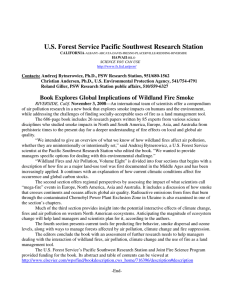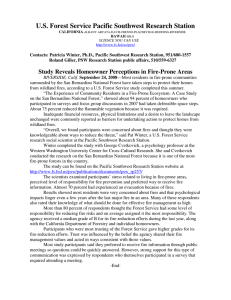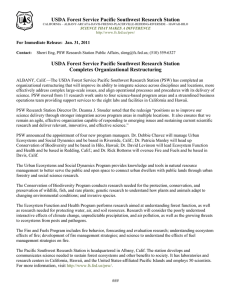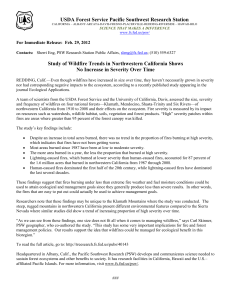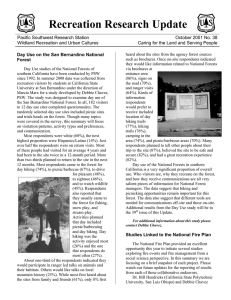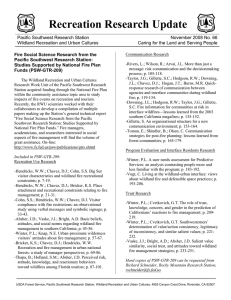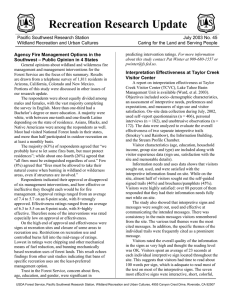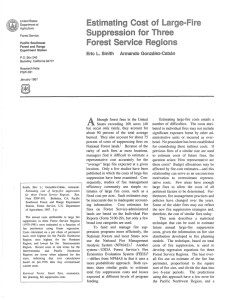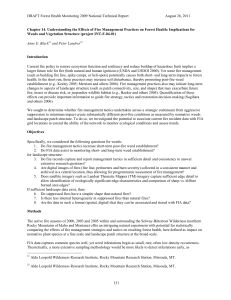U.S. Forest Service Pacific Southwest Research Station
advertisement
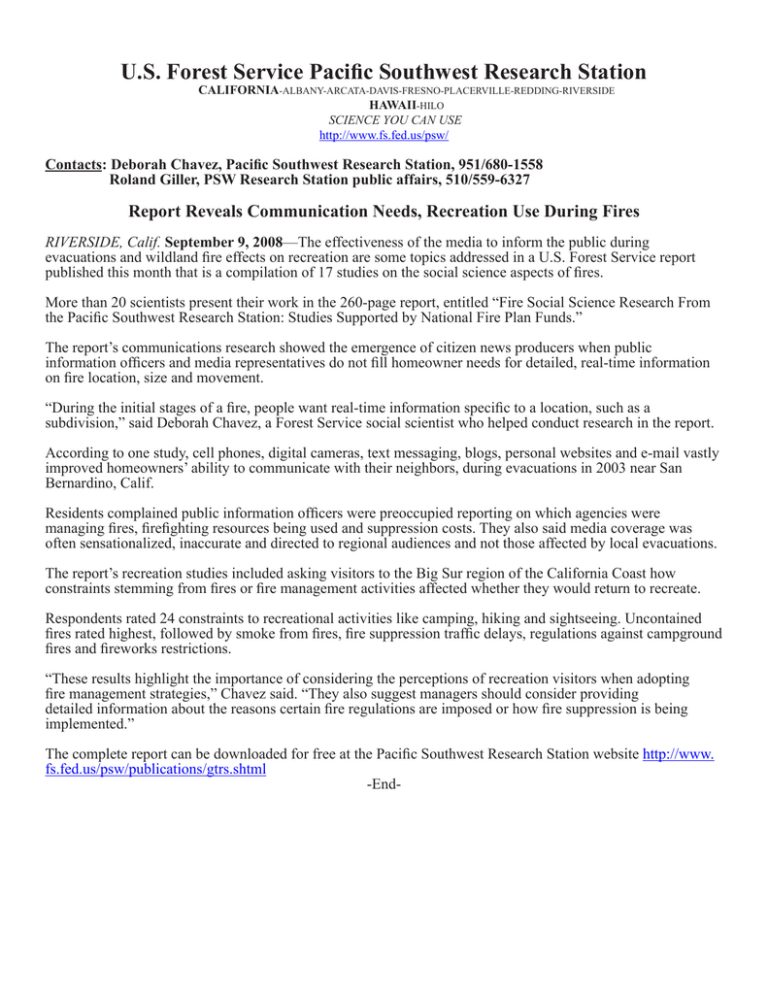
U.S. Forest Service Pacific Southwest Research Station CALIFORNIA-ALBANY-ARCATA-DAVIS-FRESNO-PLACERVILLE-REDDING-RIVERSIDE HAWAII-HILO SCIENCE YOU CAN USE http://www.fs.fed.us/psw/ Contacts: Deborah Chavez, Pacific Southwest Research Station, 951/680-1558 Roland Giller, PSW Research Station public affairs, 510/559-6327 Report Reveals Communication Needs, Recreation Use During Fires RIVERSIDE, Calif. September 9, 2008—The effectiveness of the media to inform the public during evacuations and wildland fire effects on recreation are some topics addressed in a U.S. Forest Service report published this month that is a compilation of 17 studies on the social science aspects of fires. More than 20 scientists present their work in the 260-page report, entitled “Fire Social Science Research From the Pacific Southwest Research Station: Studies Supported by National Fire Plan Funds.” The report’s communications research showed the emergence of citizen news producers when public information officers and media representatives do not fill homeowner needs for detailed, real-time information on fire location, size and movement. “During the initial stages of a fire, people want real-time information specific to a location, such as a subdivision,” said Deborah Chavez, a Forest Service social scientist who helped conduct research in the report. According to one study, cell phones, digital cameras, text messaging, blogs, personal websites and e-mail vastly improved homeowners’ ability to communicate with their neighbors, during evacuations in 2003 near San Bernardino, Calif. Residents complained public information officers were preoccupied reporting on which agencies were managing fires, firefighting resources being used and suppression costs. They also said media coverage was often sensationalized, inaccurate and directed to regional audiences and not those affected by local evacuations. The report’s recreation studies included asking visitors to the Big Sur region of the California Coast how constraints stemming from fires or fire management activities affected whether they would return to recreate. Respondents rated 24 constraints to recreational activities like camping, hiking and sightseeing. Uncontained fires rated highest, followed by smoke from fires, fire suppression traffic delays, regulations against campground fires and fireworks restrictions. “These results highlight the importance of considering the perceptions of recreation visitors when adopting fire management strategies,” Chavez said. “They also suggest managers should consider providing detailed information about the reasons certain fire regulations are imposed or how fire suppression is being implemented.” The complete report can be downloaded for free at the Pacific Southwest Research Station website http://www. fs.fed.us/psw/publications/gtrs.shtml -End-
